German Chamomile, More Than Just a Soothing Tea.
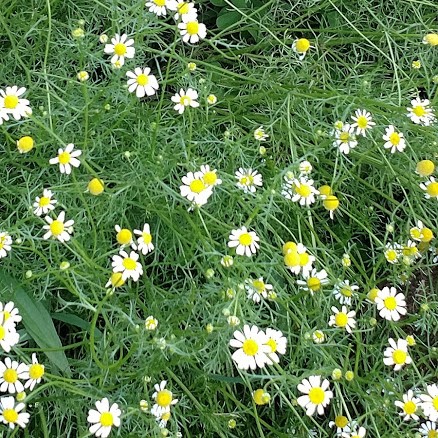
German Chamomile (Matricaria chamomilla).
Is it a flower or a weed? I guess that depends on who you ask. My husband is firmly set that it’s a weed. I, on the other hand, believe it to be worth it’s weight in gold.
Energetics
Chamomile is a bit on the warming and drying side. It’s taste is considered to be bitter. But I’ve only found that to be true if you steep it for medicinal reasons. Steeping it for a nice tea (5-7 minutes), it makes a wonderfully tasting tea.
Properties
As a bitter, it’s really great for digestive issues. It’s calming effects work for both body and mind. And it’s especially great for calming a belly ache or indigestion.
It can act as a very mild sedative and soothe a spasmodic belly making it really great for kids in helping with colic and teething.
Chamomile has been called mild, but that doesn’t mean weak. A cup of chamomile tea can calm the rough edges of a bad day and can be a perfect fix for irritability and restlessness.
It has properties that can help modulate inflammation and help with healing. These properties can support healing for external burns, rashes and pink eye. It makes a great eye wash for irritated eyes.
As a relaxing diaphoretic (a fancy word for it makes you sweat), chamomile can help with cold & flu symptoms. This diaphoretic action is great for supporting the fever process and getting you to the other side of it in a much more efficient manner.
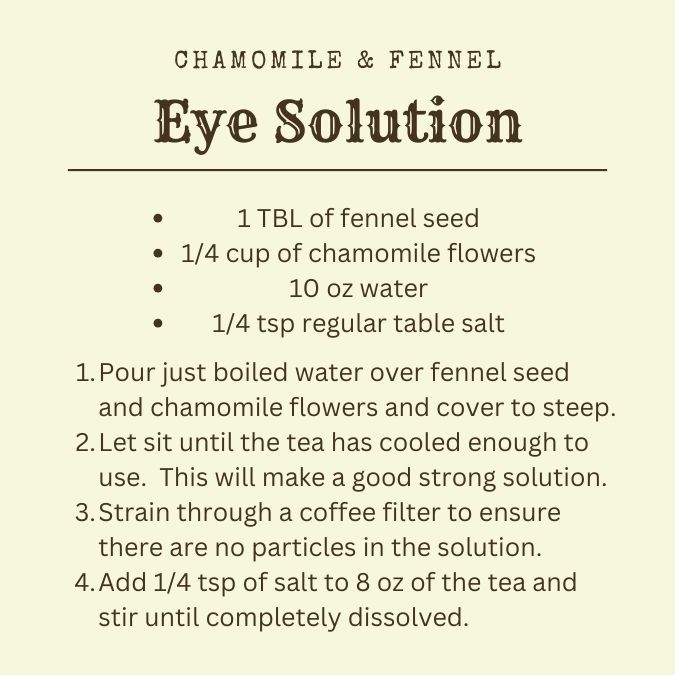
Growing Chamomile
Years ago, I planted chamomile in a raised bed. It grows abundantly and in no time it was spilling over the bed, looking like a waterfall of beautiful daisy type flowers. I picked and picked hundreds of flowers drying them to use as tea.
By the end of that year, we had decided to move that raised bed. Years later I found patches of chamomile all over the yard.
I was real excited, my husband not so much. Of course, I didn’t want him to mow any of these patches. We finally came to a compromise and decided to let a few of them to grow and he’d mow the rest.
I have to say, this stuff does spreads like a mint plant. Be careful where you plant it.
How to use Chamomile
Chamomile as a tea.
Because it tastes so good, it’s an easy sell to most folks including kids. Add a touch of honey and no one complains.
This cup of tea can ease a stressful day, relieving the stress in your shoulders and back.
Steep it a little longer (15 min or so) and you have a great after dinner tea. This will be a little more bitter, but that bitterness is what helps with the digestion and the antispasmodic nature can help relieve and stop the gas pains in the belly.
A tea can be used as a topical remedy too. The properties it contains for modulating inflammation is best used as a poultice or a wash for rashes, burns or other skin issues.

Using Chamomile as a bath tea can be extremely relaxing and it smells divine! This is one you really should try sometime.
You can infuse it in oil.
As an infused oil, you can relieve that stress as well. Rub in into tight muscles to help relieve tension.
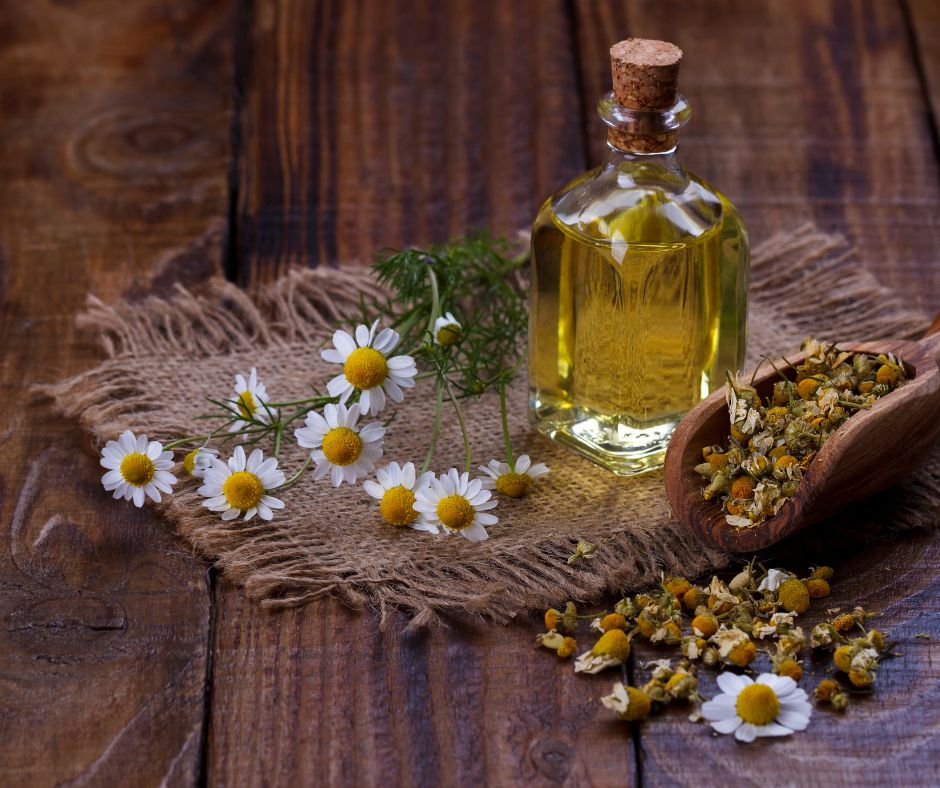
Chamomile is also a great aromatic, and those aromatics can help relax you as well.
Use the oil on the bottom of your feet at night to help you relax for a good night’s sleep. This would be really great for dry cracked feet too because of the healing nature of the chamomile itself as well as the oil for some moisturization. Add a little aloe vera gel for good measure if you want a little extra moisturizing action.
That antispasmodic action is great for cramping muscles in the shoulders, legs or relieving tension headaches or for menstrual cramps.
Facial steam/steam inhalation
Making a steam using chamomile can have a few different benefits.
As a facial steam, chamomile is really great for the skin because of it’s inflammation modulating, healing and calming actions. All of these properties will make your skin happy.
As a steam inhalation, you can use all those relaxing properties for the rest of your body. It’s a win-win anyway you look at it.
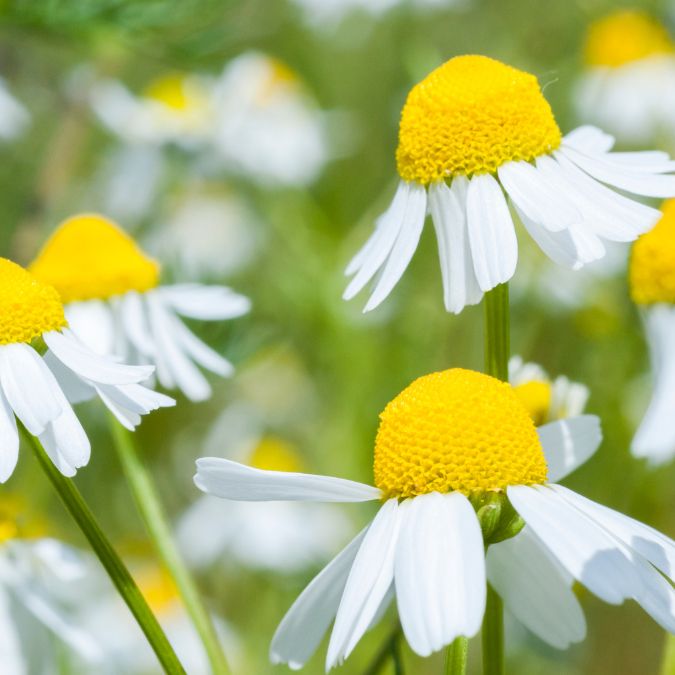
A chamomile tincture
You can make and use a tincture in any way you might use a tea or an oil.
The only reason I could imagine making it into a tincture is for faster relief or to preserve the herb.
Chamomile tastes good enough that a tincture isn’t a usual method of use. But like all tinctures, the alcohol can help get the properties into your body quicker and it can be better than drinking a cup of tea before bedtime.
For cold and flu symptoms
You can use chamomile in tea form for it’s diaphoretic properties. This is a natural way to help relieve a fever.
It doesn’t reduce a fever like taking an aspirin. You never want to artificially reduce a fever. Instead it’ll help a fever progress and work more efficiently to do it’s job.
Our body creates a fever when the heat is necessary to kill off or stop bacteria or a virus from replicating. You don’t want to stop that process. But you do want to help get to the other side of it. Of course, that’s not to say fevers won’t come and go, but each time you’ll know how to help it along.
What chamomile does is relax the pores and our bodies which allows the heat to escape more readily. And drinking a stronger tea can help you get the rest that you need when you’re sick.
A note about Roman Chamomile and Pineapple Weed
Roman Chamomile (Chamaemelum nobile) is commonly confused with German Chamomile (Matricaria chamomilla) because of the similarity in the name. These are 2 distinctively different plants with different profiles. There may be some similarities, but they are not interchangeable.
The name confuses folks because they’re so similar. That’s why the Latin name is so important when using herbs as a home remedy.
Pineapple weed (Matricaria discoidea). This plant is actually from the same family as the German Chamomile we talked about in this blog. Personally, I’ve not run across this one. Although they say it grows in driveways and roadsides. Sounds like my kind of plant. This one is actually interchangeable with German Chamomile (Matricaria chamomilla) and has many of the same or similar properties.
Have you used Chamomile in the past? What did you think? I’d love to hear how you’ve used it and if you liked it.
Let me know your thoughts on this beautiful little plant.
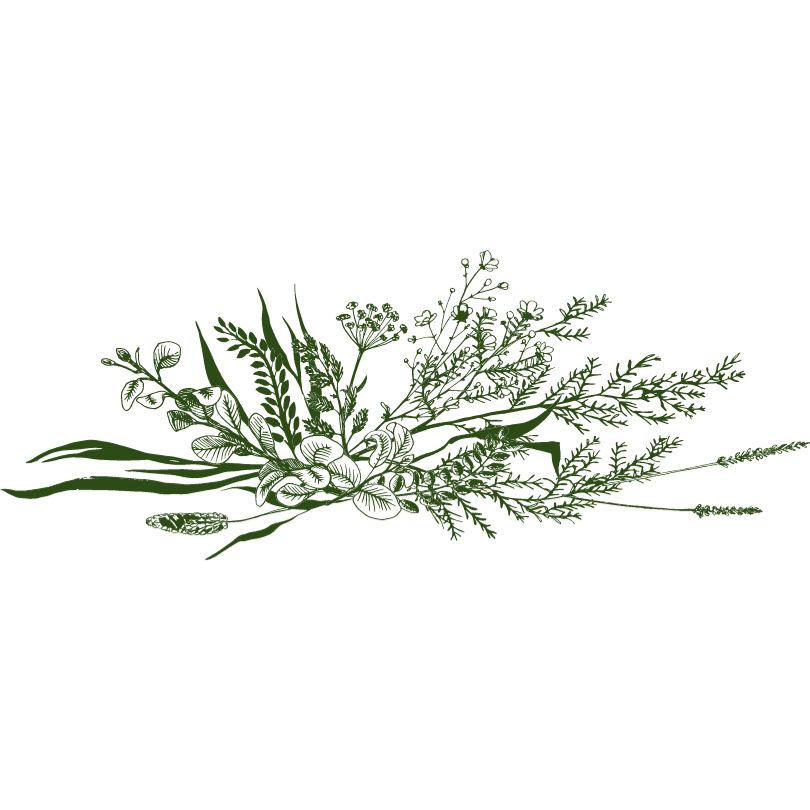

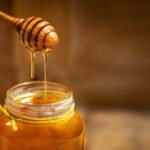
Pingback: Headache relief the natural way.